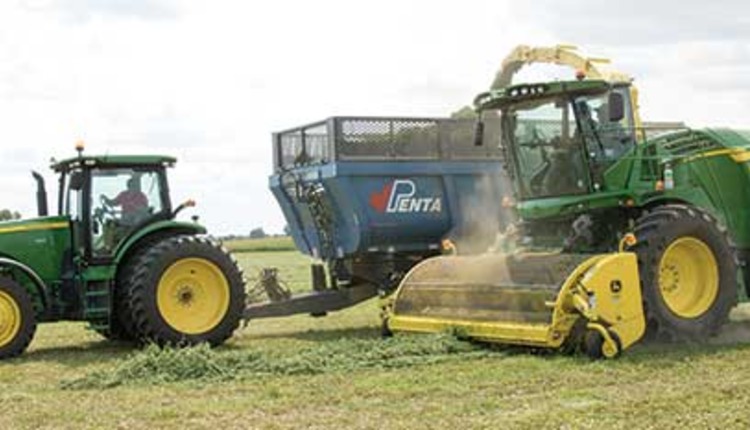Make harvest connections |
| By Jon Sykes |
|
|
|
Jon Sykes owns M&L Farms Inc., located in Quitman, Ga. The farm has been custom harvesting since 2000 The business has four full-time employees and up to 15 seasonal employees. Jon’s wife, Brandy, is the bookkeeper. Jon and Brandy have three daughters: Morgan is a freshman in college, Lindsey is a sophomore in high school, and Jenna is in 7th grade. The girls actively participate in the operation, including working the scale house, delivering lunch, assisting move equipment, helping with office work, and running irrigations.  It’s that time of the year again. Cereal grain crops are maturing, spring harvest is in full swing, and corn planters are heading to the field. Custom harvesters and crop farmers are anxious to see if the hard work in the office and shop over winter will translate into improvements in production and ultimately the bottom line. We tend to focus a lot of attention, and rightly so, on things like preventive maintenance, personnel changes and my favorite, investing in new and shiny equipment. While these are certainly important, I would like to suggest three additional ideas that will make your harvesting plan a little less stressful. Know the nutritionist Get to know the nutritionist and feed manager at each job. I’m not implying that you should vacation together or even exchange gifts on each other’s birthday; however, I think it’s important as a harvester to have a basic understanding of what goals these folks are trying to accomplish. Every farm is unique, and nutritionists and feed managers will have established quality standards that are specific for that farm’s cows. I think it is important for harvesters to understand what these goals are and the reasons behind them. Most nutritionists I know think that custom harvesters only care about tons per hour, and most custom harvesters think that nutritionists only exist to cause pain and heartache. We like to set up a time during the winter to meet with each of our customers to review the past year’s crop. This is a great time to celebrate the success and address areas that need improvement. Our experience has been that we are able to produce a superior product and our customers also gain a better understanding of the challenges we face while harvesting their crops. Ditto for the crop grower Get to know the farm manager or custom grower. Once again, I’m not suggesting you exchange Christmas cards or arrange the marriage of your firstborn children. I am saying that each farm is very different and unique, as are the management practices of people who are in charge of them. As dairies continue to grow in size, a greater percent of the feed they need is coming from outside sources. These farmers may not have any idea of the challenges that come with harvesting silage. We like to have our customers give us a list of growers as soon as possible, and then we make time to visit each farm and see what the field conditions are prior to planting. We then visit each location again a few weeks prior to harvest. This program has given us a better understanding of what each farmer is trying to accomplish, and it has opened the door for us to make subtle suggestions that will make harvesting more efficient. Get a contract There are as many reasons to have a contract for custom harvesting as there are opinions on the best way to feed cows, but I want to focus on one specific benefit — communication! The more information that all involved have prior to harvest, the greater chance that all will be happy with the results. Preparing a written contract will give the harvester, grower, and the dairyman peace of mind knowing that everyone involved is on the same page. These documents do not have to be complicated. I prefer a one-page contract that simply states what service I will provide; that I will meet the quality standards given to me by the nutritionist, feed manager, and crop farmer; and it contains the cost to the dairy for my services. Harvesting has become terribly expensive and there is not a lot of wiggle room in our budgets, so taking steps to improve communication has become as important as preventive maintenance on our equipment. Beware of anyone who resists the idea of contracts. Sadly, the era of looking a person in the eye, a handshake, and my word is my bond seems to be all but forgotten in today’s business landscape. The dairy industry looks to be in for a tough year in 2016. Let’s do all we can to make the process of harvesting silage as smooth as possible. Have fun and be safe! This article appeared in the April/May 2016 issue of Hay & Forage Grower on page 16. Not a subscriber? Click to get the print magazine. |
